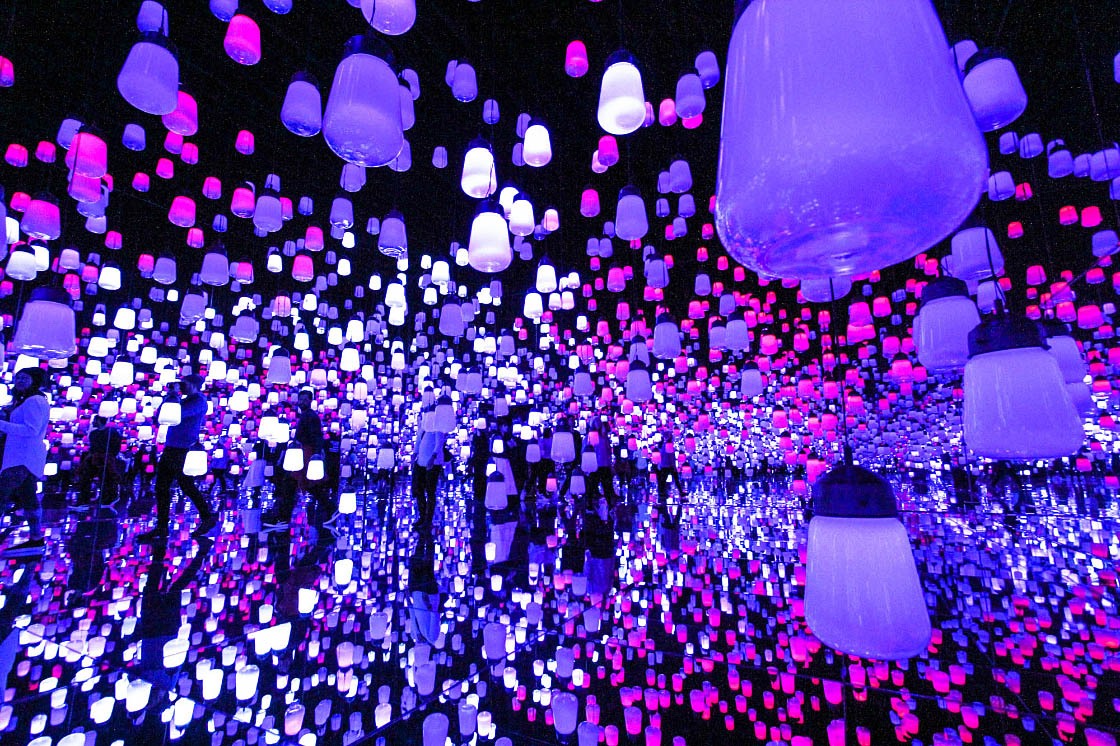Museums without boundaries: teamLab Borderless and teamLab Planets
Let's face it. Museums can sometimes be a bit... boring. The stuffy atmosphere. Abstract scrawlings that just don't seem to want to be understood. That expectation of silent contemplation that somehow leaves you more drained than edified.
At worst, an art museum can sometimes feel like literally watching paint dry.
But what would it be like if a museum was an immersive experience in itself?
A group by the name teamLab has an answer for that. After nearly two decades of experimenting in the realm of interactive three-dimensional digital art, the Tokyo-based art collective - a collaborative band of artists, programmers, engineers, CG animators, mathematicians and architects - has brought new life to the way we experience art, and indeed museums themselves.
In the last two years, teamLab has created two new museum experiences in Tokyo that have both become wildly popular. Each exhibition has its own concept. teamLab Borderless, located in Odaiba, is made up of artworks that form one borderless world: the works move between rooms, communicating with and even influencing each other. teamLab Planets, in Toyosu, explores the concept of "Body Immersive" - the massive artworks are on such a scale that the boundary between the body and art is blurred, and people become completely immersed in the art.
teamLab Borderless
After seeing visitors' photos on Instagram - where images from the exhibitions have made them a social media hit over the last two years - I was very excited to experience both for myself. I started with a visit to MORI Building DIGITAL ART MUSEUM: teamLab Borderless, which has a permanent location in Odaiba's Palette Town entertainment complex just under a giant ferris wheel.
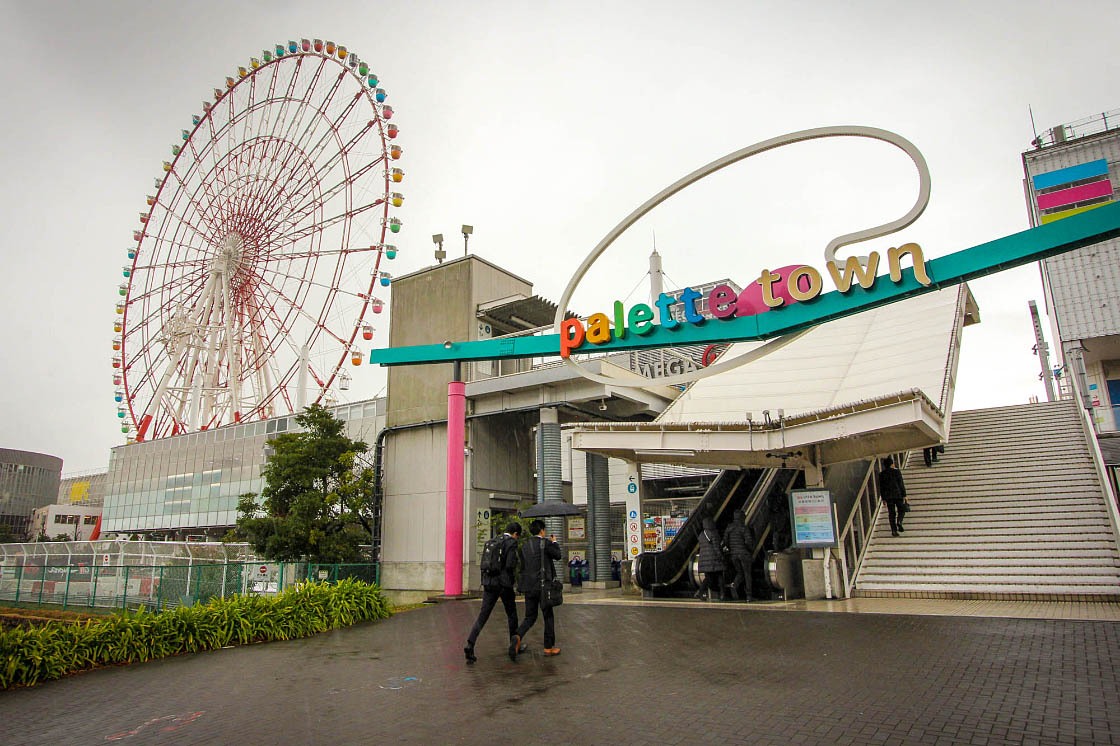
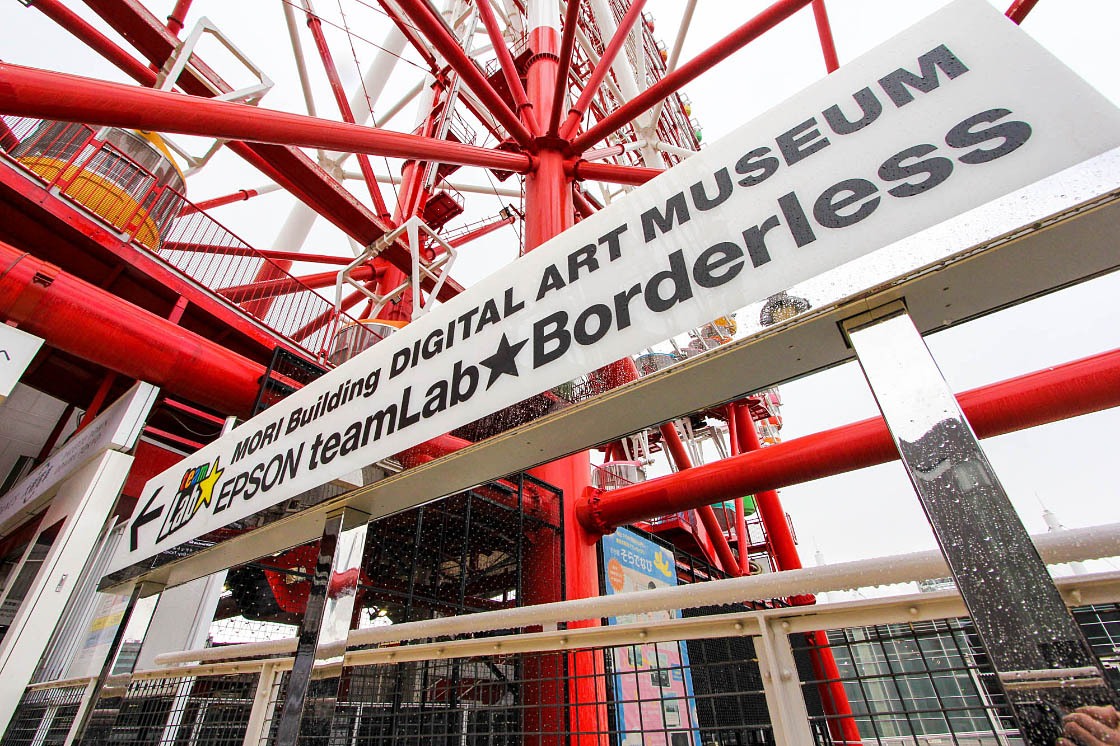
After paying and dropping off my coat in a convenient coin locker in the ticket lobby, I walked into a dark hallway draped in black curtains. At the end were three doors leading to three different routes through the exhibition. Besides simple names for each path, there is no knowing where each will lead, so the adventure is yours to choose for yourself.
From the dark entrance, I emerged into a room covered with colorful glowing flowers bursting across every surface. The artwork in this room, called "Forest of Flowers and People: Lost, Immersed and Reborn," is in constant motion. "Neither a prerecorded animation nor on loop, the work is rendered in real time by a computer program," according to teamLab. If a visitor touches or steps on a bunch of flowers, they may scatter. If you stand still, flowers bloom around you.
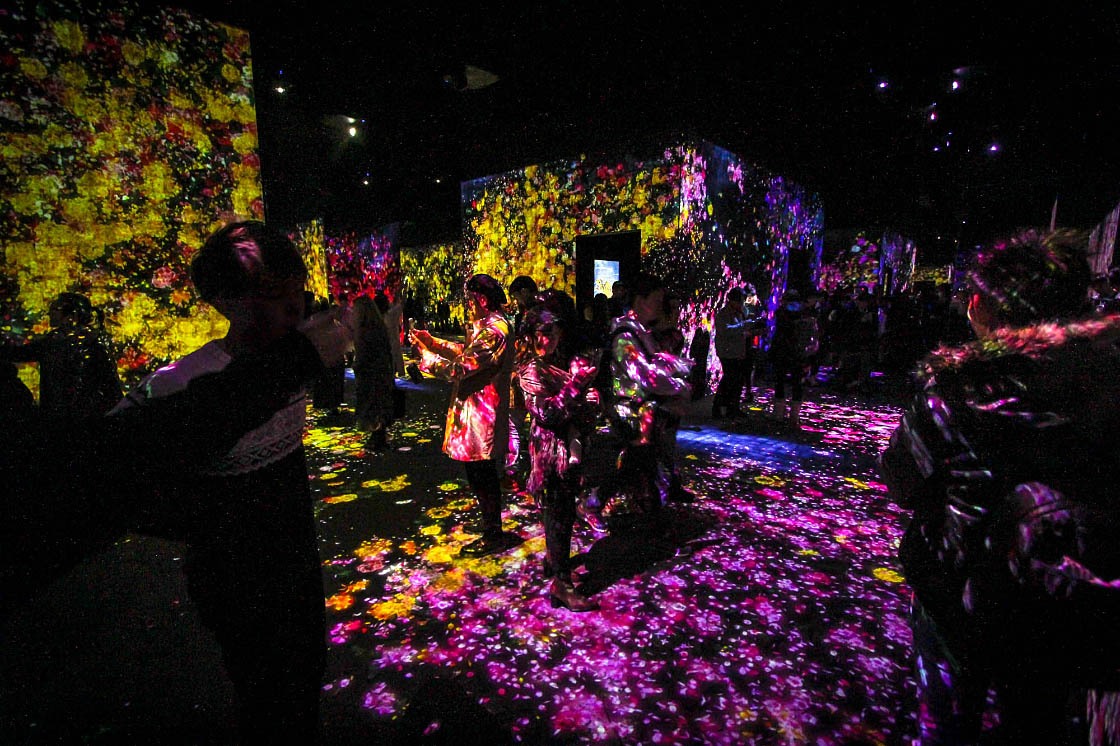
As I walked through this "forest," flowers and butterflies trailing me, I came to a larger room with what looked like a huge waterfall of light pouring down the wall from the ceiling. Not only reactive to people who enter the rooms, the art of teamLab Borderless takes its name from the way that each artwork interacts with other artworks. The flowers from the previous artwork, for example, flowed into this new room and melded with the water.
The waterfall itself is also interconnected with the art in other spaces. One floor above in an exhibit that resembles a forest with rolling hills, groundwater-like "particles" seep down from the ceiling of the exhibit and pool into a valley in the floor. When the pool becomes full, it then drains dramatically, unseen from above, forming the lower waterfall.
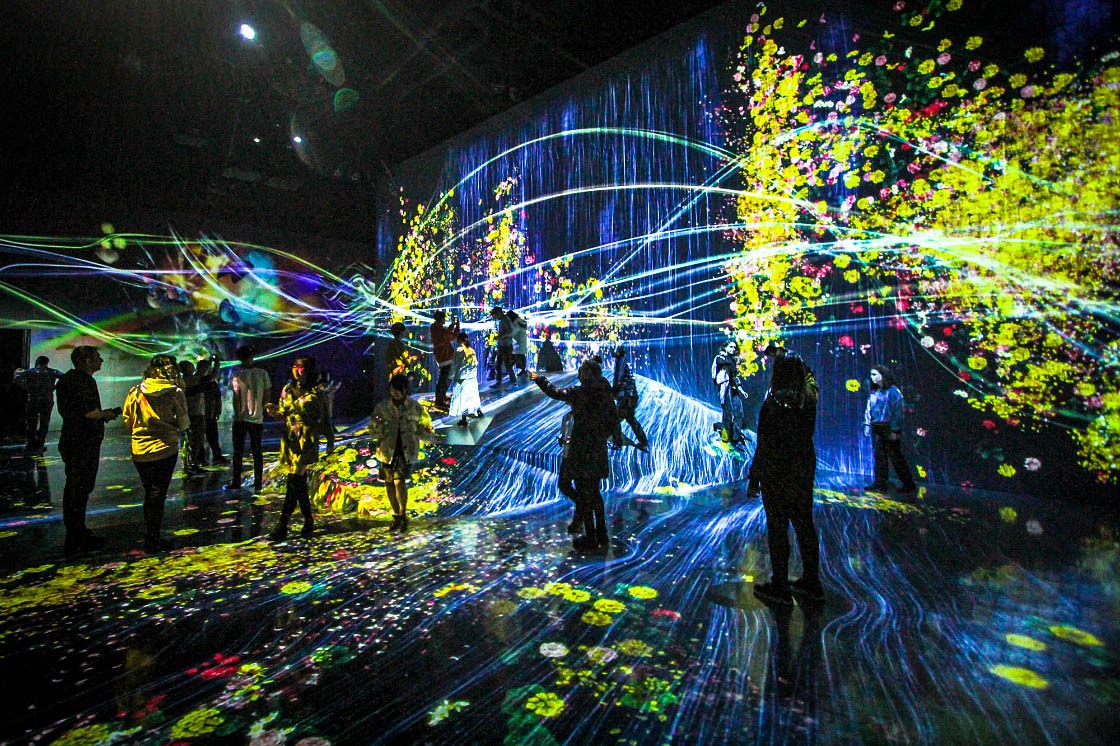
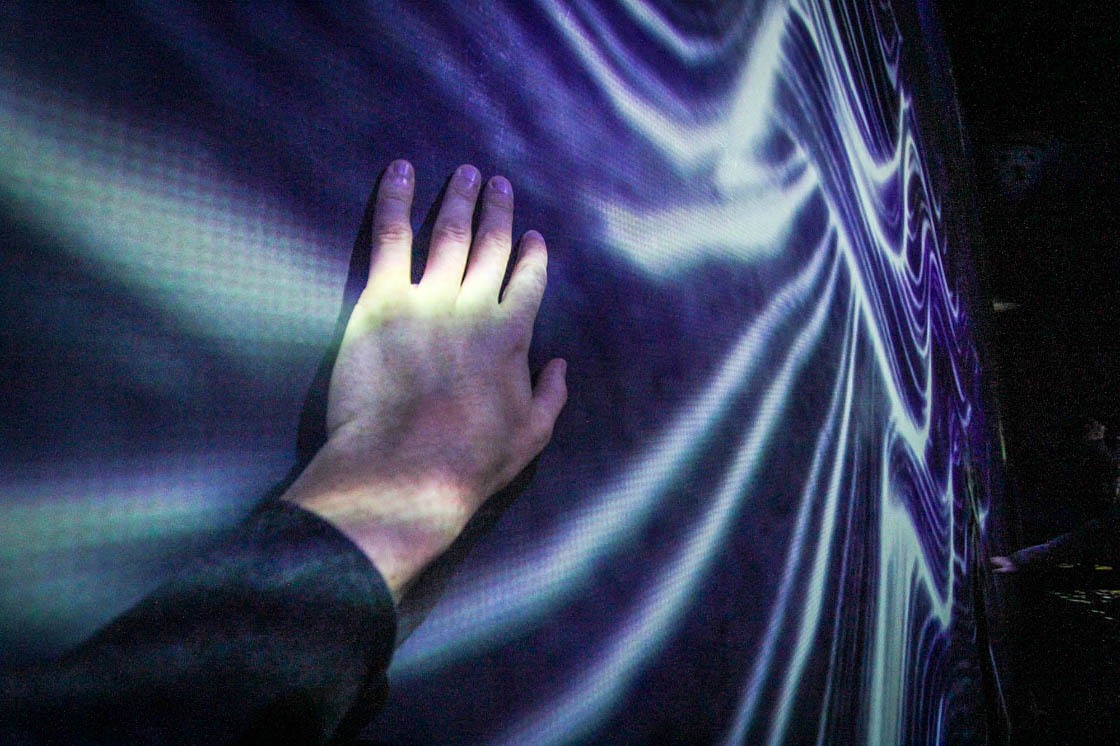
Moving on from the waterfall, I soon found myself in a crystalline maze. "Wander through the Crystal World" is a large space completely filled with meticulously arranged strings of LED lights suspended from above and surrounded by mirrored floors and walls. Like all of the exhibits in teamLab Borderless, the state of the lights are never the same twice, ever. The lights gracefully change color and intensity as visitors walk amongst them, displaying incredible slow and fast-moving patterns.
And of course, the art here has its own way of interacting with visitors. Here, after downloading the teamLab app onto a smartphone, you can use the app (or a tablet placed strategically within the maze) to send signals to the exhibit. Depending on your choice and timing, the lights will react in different ways, moving in a different pattern or color or speed.
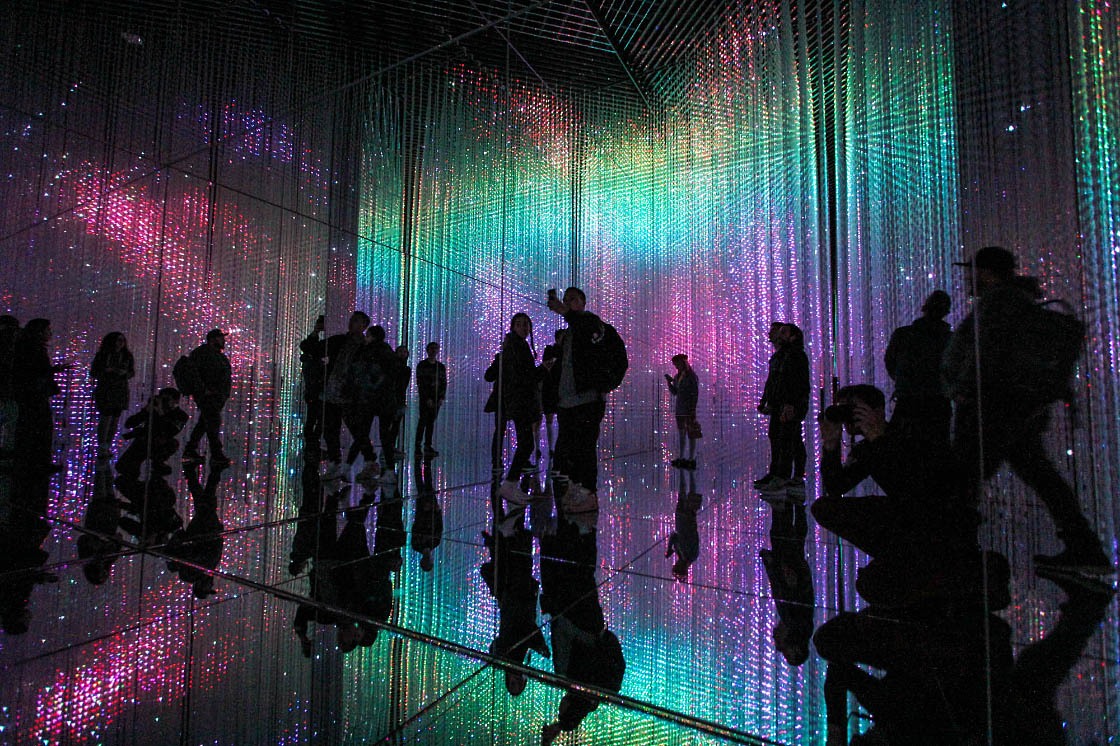
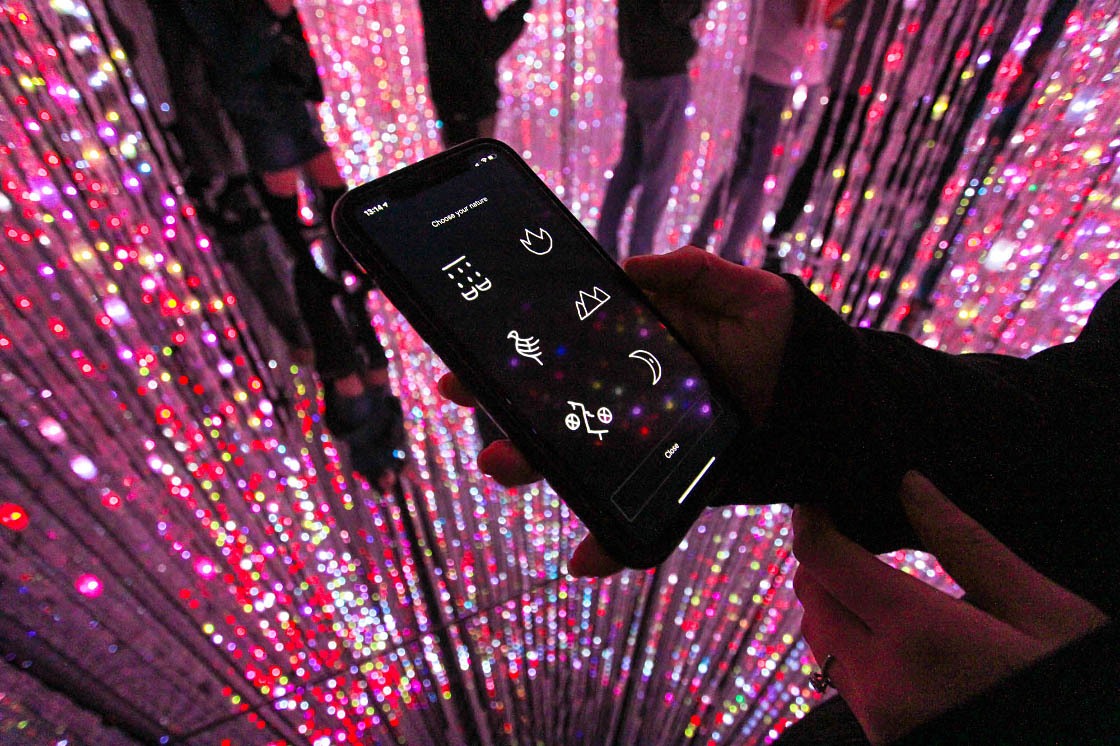
Another room explored moving lights in a different way. Instead of stationary lights forming dynamic patterns, the light beams in this room themselves moved, arranging into fascinating moving lattices and shapes.
Here too, the art in this room can be affected by elements from other artworks: butterflies and crows sometimes "freely" move into this room from others, acting as independent - but not isolated - intelligences within a responsive ecosystem.
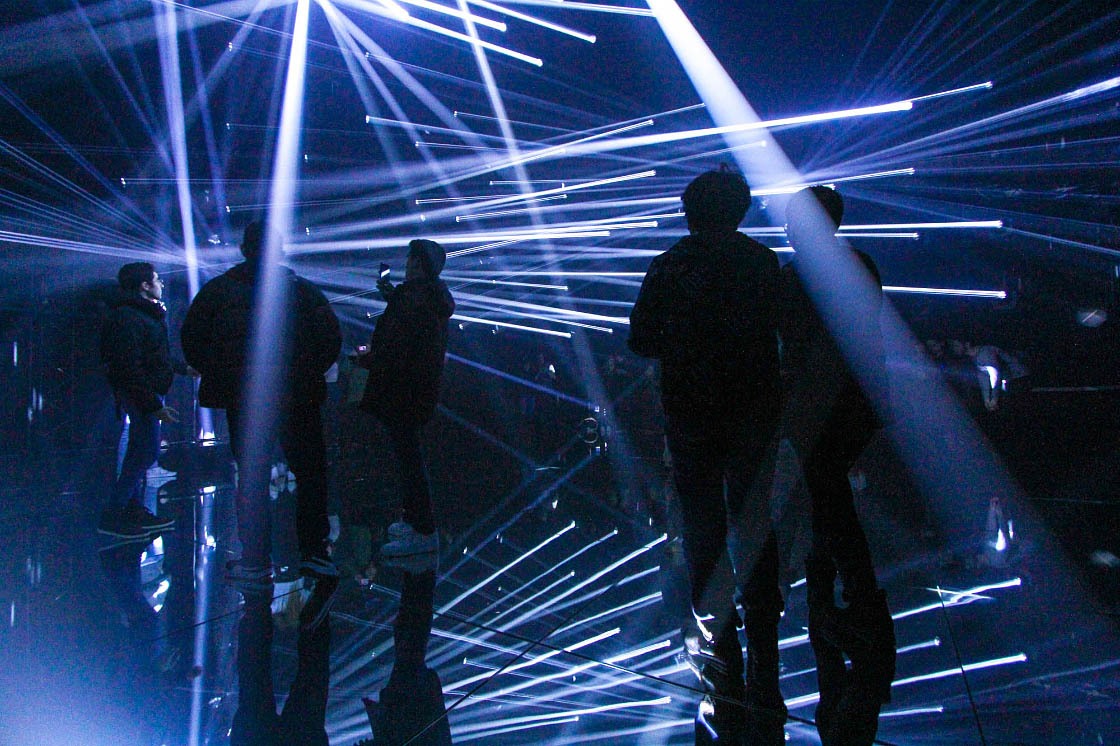
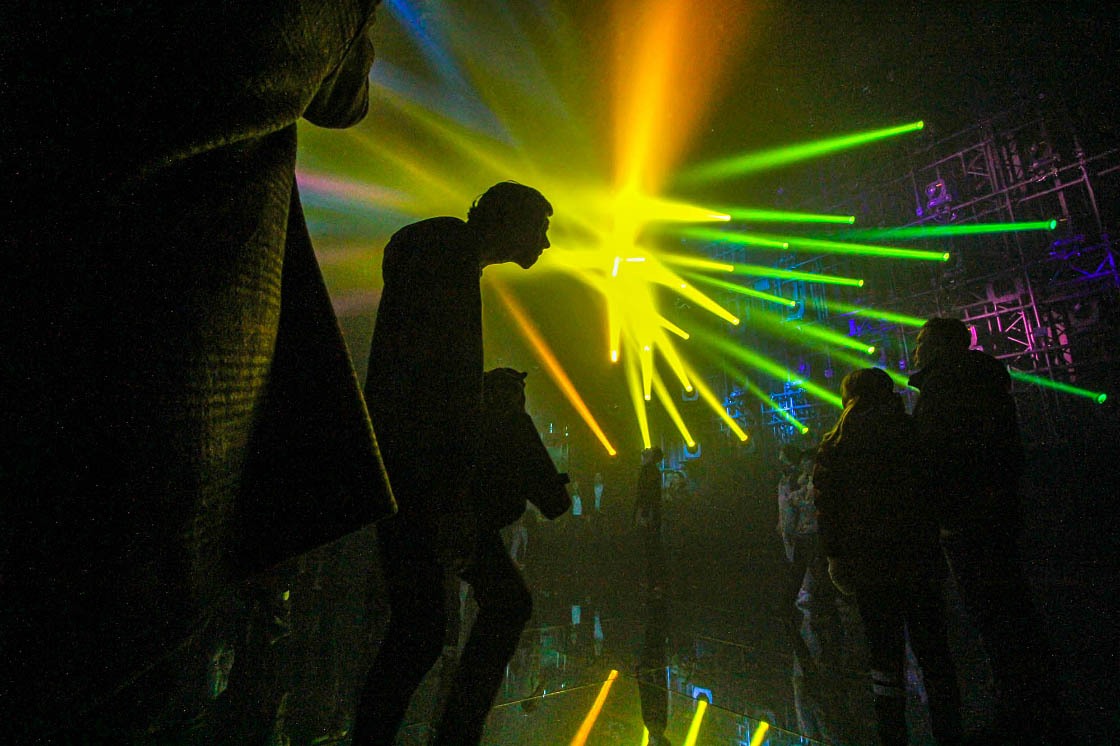
One of the highlights of teamLab Borderless was the incredible "Forest of Resonating Lamps." This completely mirrored room is filled with hundreds of simple hanging lamps which slowly change brightness and hue in response to visitors. In the mirrors, the lamps appear to fill an infinite space to breathtaking effect. The colors here also reflect the season, changing from greens in warmer months to blues in the winter, with a spectrum in between.
Thanks to Instagram, this room in particular has become extremely well-known. Happily, for me at least, the quiet sense of wonder of this exhibit, and all the exhibits at teamLab Borderless, were worth the hype.
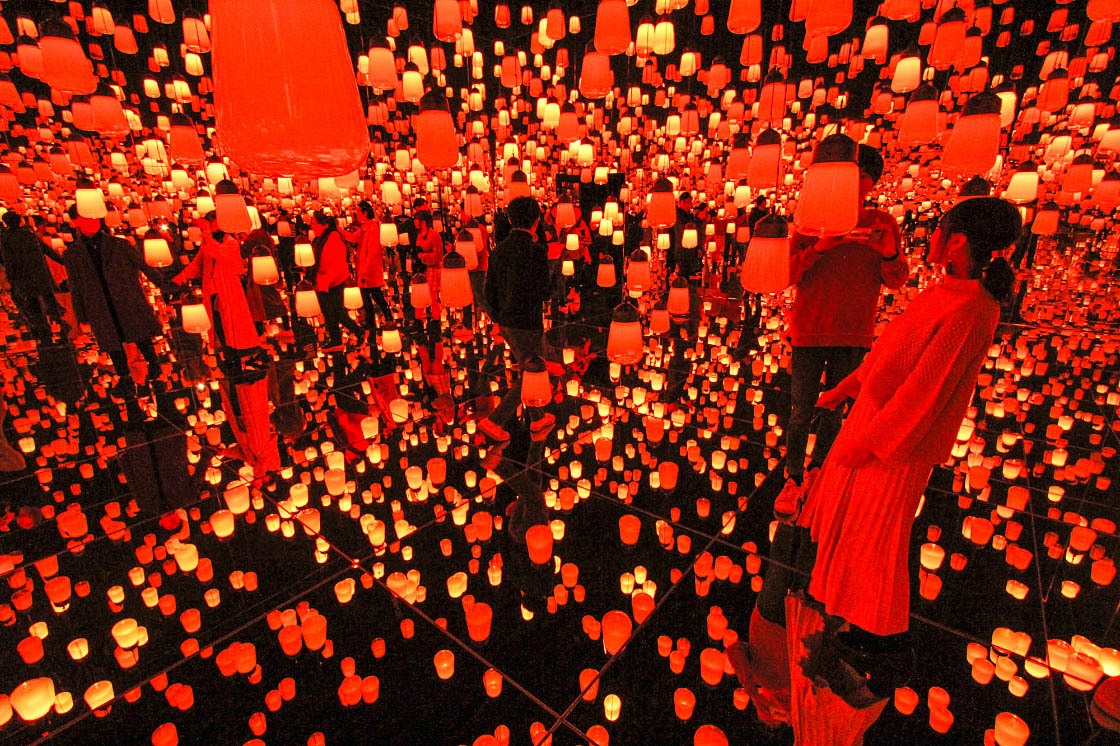
teamLab Planets
After exploring teamLab Borderless, I next set out to visit teamLab's other major Tokyo exhibition: teamLab Planets. Located just a few train stops away from teamLab Borderless on the Yurikamome Line, this temporary installation in the Toyosu area is scheduled to remain open through autumn of 2020.
teamLab Planets, like teamLab Borderless, is dedicated to exploring the relationships between humans, nature and art. But perhaps even more than its sister exhibition, teamLab Planets tries to immerse visitors, quite literally, in its worlds of art.

Upon entering the museum, all guests were asked to remove their shoes and socks (which can be stored in provided lockers). And like teamLab Borderless, the museum begins with a dark corridor, only this time, the corridor was filled with running ankle-deep water. Guests walk barefoot up an incline in the gently cascading water leading to a sparsely lit (actual) waterfall to begin their journey.
Eventually I found myself at the border of a space filled with matrices of suspended LED lights very similar to the Crystal World of teamLab Borderless, only this time the scale was much grander; less a world, and more a universe in itself.
In each area of teamLab Planets, like its sister exhibition, there was also unique music playing, helping to communicate each exhibit's story. In "The Infinite Crystal Universe," the music was ethereal and sparse, seeming to swell when the lights did. The overall effect was immersive, as if I really had fallen into a vortex of space and time.
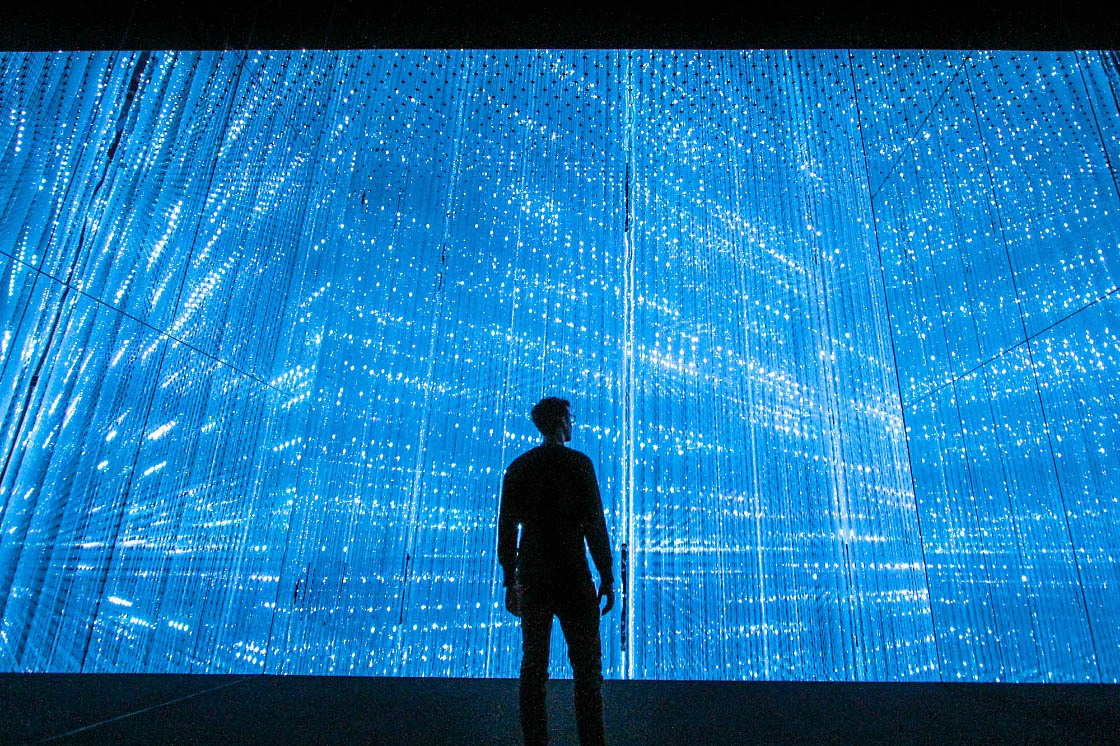
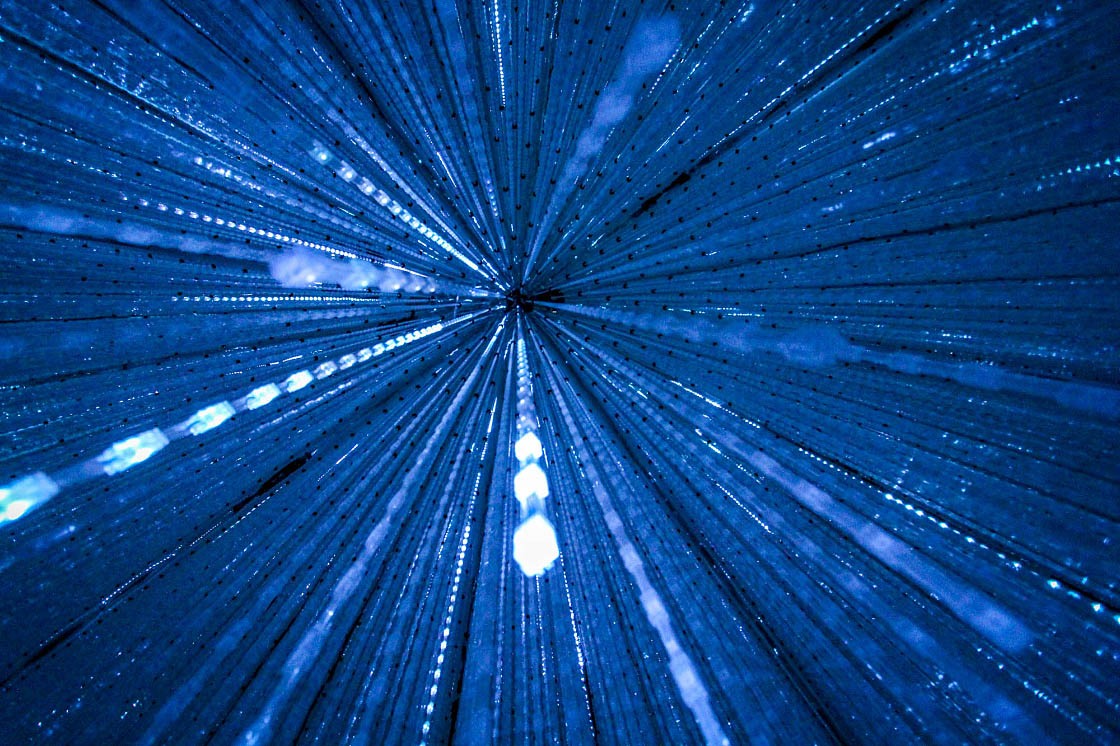
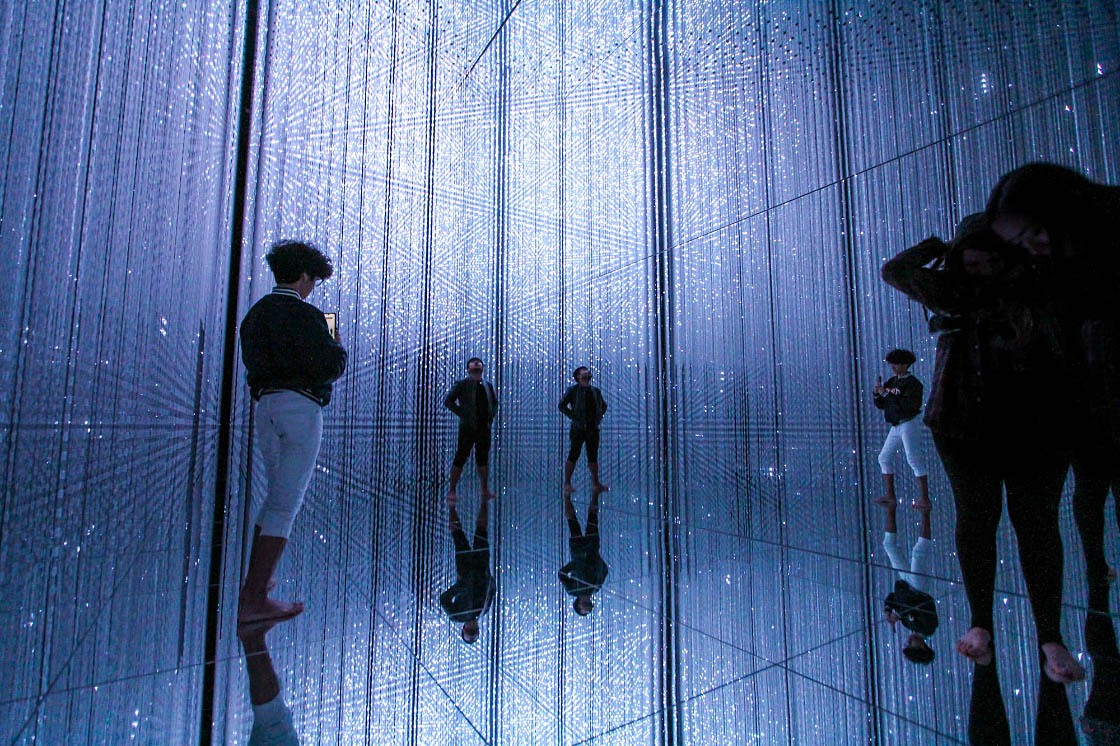
As I ventured deeper into the dark halls of the exhibition, the water returned, even deeper than before, leading to another vast space completely filled with warm water. The water in this room, though, was filled with hundreds of streaking, differently colored lights. The lights, on closer inspection, were actually projected koi fish, each moving according to its own rules and the movement of the people in the water.
If I stood still, nearby fish would slowly begin to circle around me. The longer I stood, the more fish would come and the faster they would move. After several minutes, almost every fish in the room had found its "preferred" center of gravity and the light they emitted became brighter and brighter until the entire room was filled with light.
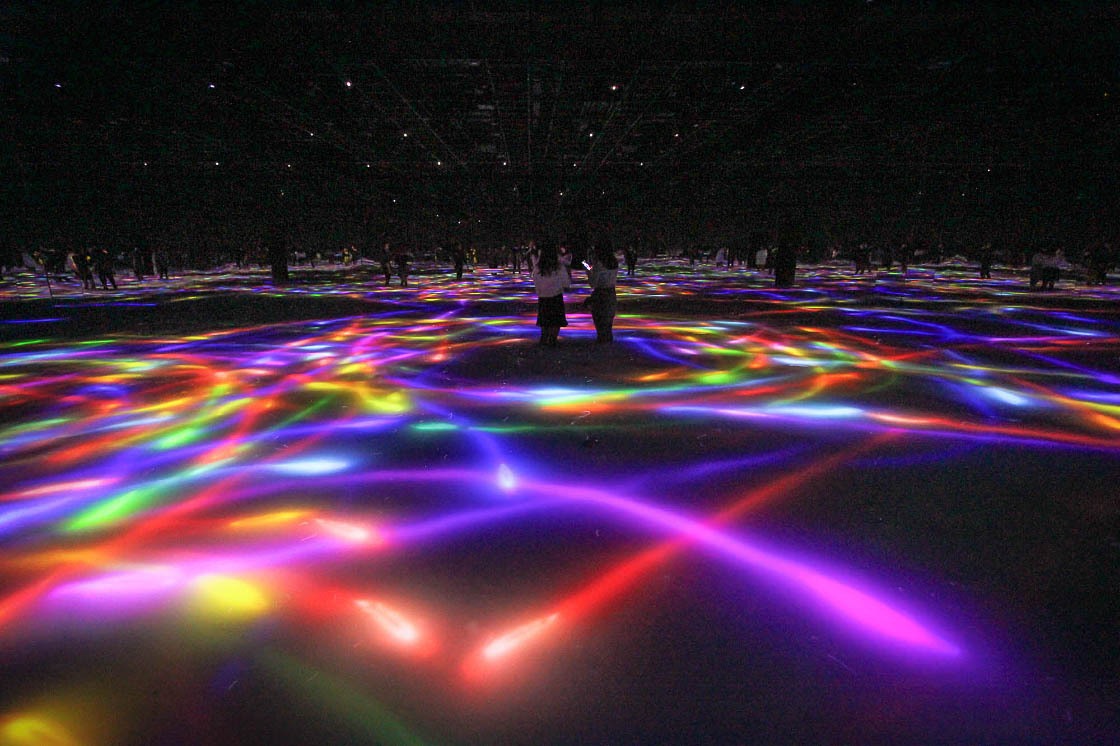
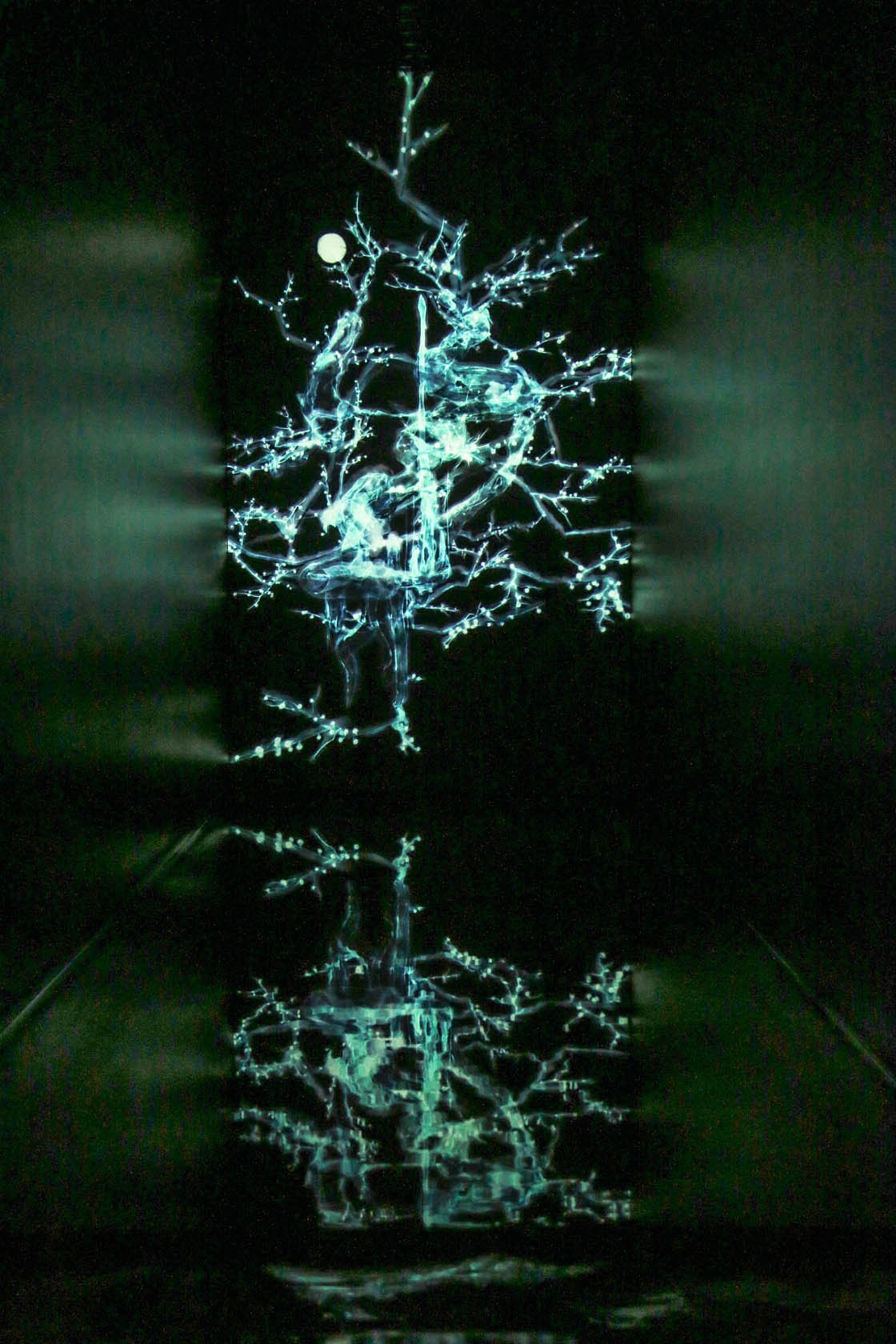
One of the final exhibits was a bright room with mirrored floors and walls filled with large soft spheres. These spheres each emit light of a certain color. When the spheres are moved by a visitor, they change color and spread their new color to neighboring spheres throughout the room. Both the light and the three-dimensional space of the room constantly evolve.
After a full afternoon visiting both of these teamLab exhibitions, I left, as I think the creators intended, with a sense of wonder and a slightly greater awareness of how interconnected we all are with the world around us. Sometimes we just need something to remind us of how beautiful and amazing the world can be.
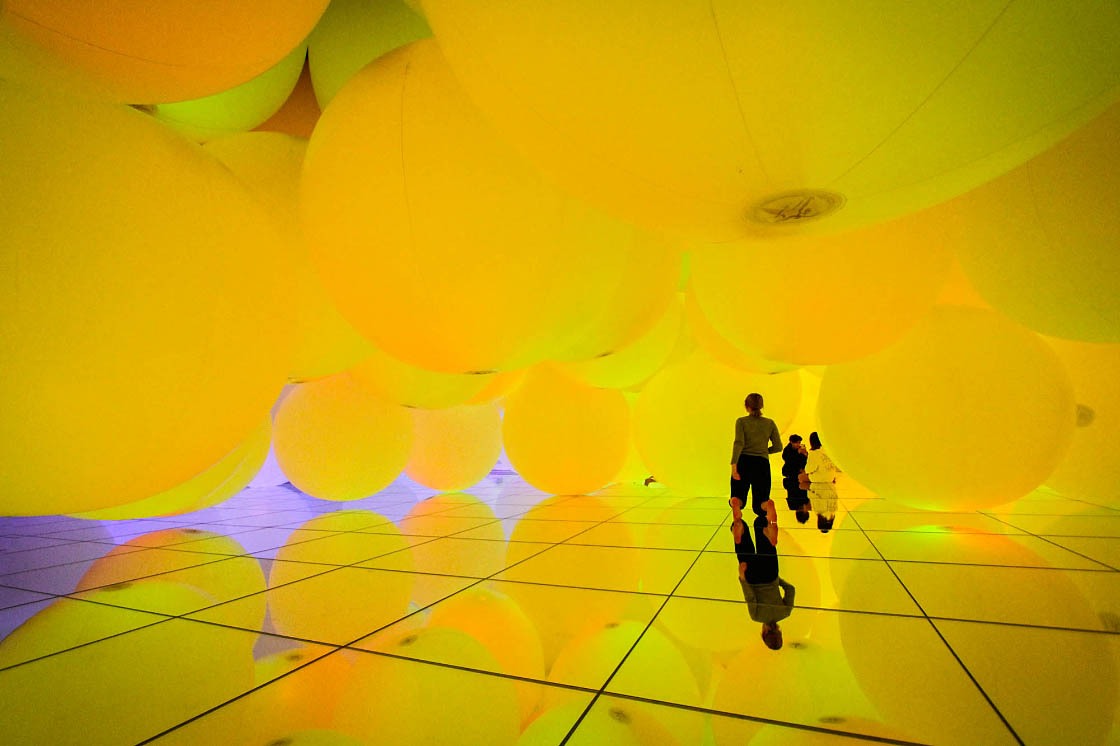
Book your tickets for teamLab Borderless and teamLab Planets
Order your tickets to either teamLab exhibition using the links below to avoid long lines or arriving to find tickets are sold out!
